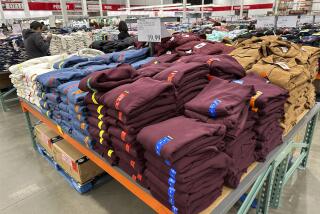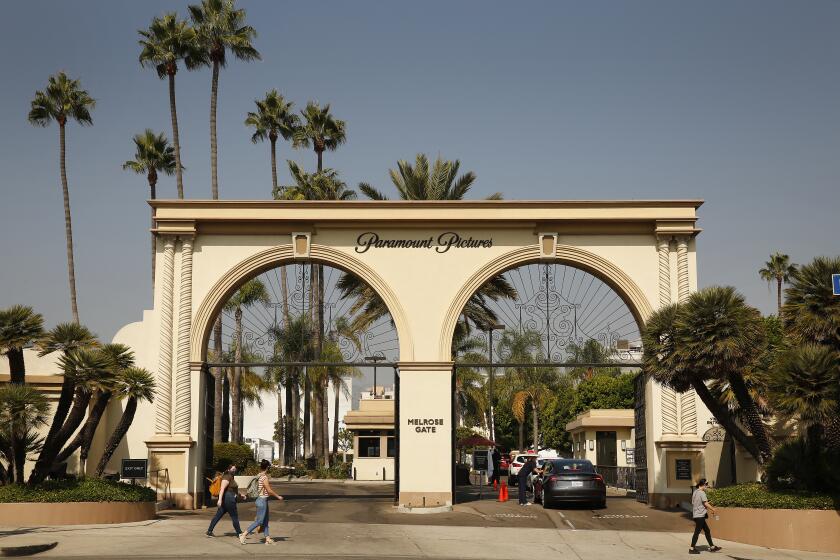Factory Sales Take Steepest Fall in 2 Years : Inventories Rise 0.4% in January, Twice as Fast as in December
- Share via
WASHINGTON — Sales of manufactured goods in January suffered their steepest decline in nearly two years, while inventories grew at twice the pace of the previous two months, the government reported Thursday.
The Commerce Department said total sales declined by 0.7% to $415.5 billion in January, following increases of 1% in both December and November.
Inventories rose 0.4% during the month to a level of $568.4 billion. This was twice as fast as the 0.2% gains posted in both December and November.
The sales decline was the steepest since a 0.9% drop in February, 1983, but analysts said neither the sharp sales drop nor the more rapid accumulation of inventories posed worrisome problems.
Retail Strength
They said the 1.4% February gain in retail sales reported Wednesday showed that this important segment was now showing strength.
In January, retail sales rose 0.5%. However, this gain was not enough to offset a sharp 1.7% decline in sales by manufacturers and a 0.1% dip in sales at the wholesale level.
On the inventory side, retail inventories rose the most--1.2%--followed by a 0.6% increase at the wholesale level. Inventories held by manufacturers declined for the third consecutive month, dropping 0.2%.
Robert Ortner, chief economist for the Commerce Department, said the 0.4% overall inventory gain was still in the moderate range and should not lead to concerns that inventories are growing so large that they will hold down future production.
He said 60% of the inventory growth at the retail level in the past three months has been due to efforts by automobile dealers to build up their supplies of new cars to meet strong demand.
Michael Evans, head of Evans Economics, a Washington forecasting firm, said there was probably some unwanted inventory accumulation reflected in the increase. But he said this was whittled down by the sharp rise in retail sales in February.
“I don’t think we are seeing the beginning of a trend toward higher inventories,” he said. “Businesses are generally remaining cautious. This cautious approach indicates the economy is still following a moderate growth path.”
Evans forecast economic growth at an annual rate of 4% for the first three months of the year, down only slightly from the 4.9% rate turned in during the last three months of 1984.
Robert A. Gough Jr., senior economist at Data Resources Inc., said his firm was predicting that consumer spending would grow at a healthy rate of 4.5% over the first half of the year.
“With that kind of increase in sales, the retail industry does not have anything to worry about with the stockpiles that now exist,” he said.
The overall sales decline was the first since a slight 0.2% drop last September.
The slump in sales and the continued growth in inventories in February caused the inventory-to-sales ratio to rise. It climbed from 1.35 in December to 1.37 in January, meaning that it would take 1.37 months to dispose of existing inventories at the January sales pace.
Analysts said this ratio, while up from 1.29 last January, was still in the moderate range.
More to Read
Inside the business of entertainment
The Wide Shot brings you news, analysis and insights on everything from streaming wars to production — and what it all means for the future.
You may occasionally receive promotional content from the Los Angeles Times.










